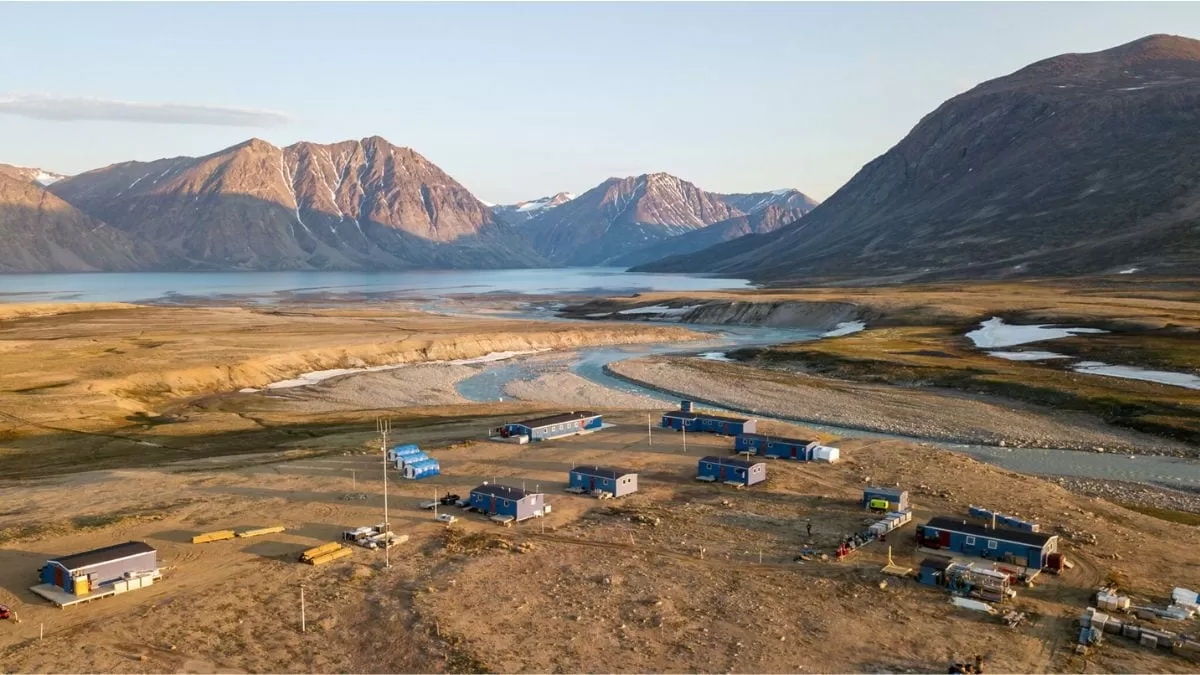Greenland, the world’s largest island, is known for its vast icy landscapes and remote, untouched beauty. However, in the past 20 years, this once frozen paradise has undergone a dramatic transformation. The island’s glaciers have melted at an alarming rate, exposing 1,620 kilometres of new coastline and altering the Arctic’s geography. This unprecedented change has been tracked by satellite data from 2000 to 2020, revealing significant ice loss and the emergence of 35 new islands. While this may seem like a small number, it has significant implications for the environment and the world as we know it.
The study, conducted by a team of scientists, has shed new light on the rapid changes taking place in Greenland. The satellite data has shown that the island’s glaciers have been retreating at an alarming rate, with some areas losing up to 100 meters of ice thickness per year. This has resulted in the exposure of new land, previously hidden under layers of ice. The newly exposed coastline and islands have not only altered the physical landscape of Greenland but have also raised concerns about the future of the Arctic region.
One of the most striking findings of the study is the identification of 35 new islands that were previously buried under ice. These islands, ranging in size from a few hundred meters to several kilometers, have been mapped for the first time. Some of these islands remain unclaimed on existing maps, highlighting the need for updated and accurate representations of the changing Arctic landscape. This discovery has also sparked debates about the ownership and potential exploitation of these newly exposed territories.
While the emergence of new land may seem like a positive development, it is a stark reminder of the impact of climate change on our planet. The melting of Greenland’s glaciers is a direct result of rising global temperatures, caused by human activities such as burning fossil fuels and deforestation. This not only affects the Arctic region but has far-reaching consequences for the entire planet. The release of large amounts of freshwater from the melting ice can disrupt ocean currents and have a significant impact on global weather patterns.
The study also highlights the urgent need for action to address the effects of climate change. Greenland’s glaciers are a vital part of the Earth’s ecosystem, and their rapid melting poses a threat to the delicate balance of our planet. The loss of these glaciers also has severe consequences for the wildlife and indigenous communities that call Greenland home. The melting of the ice has already affected the traditional way of life of the Inuit people, who rely on the ice for hunting and transportation.
Scientists warn that if the current rate of ice loss continues, the consequences will be catastrophic. Rising sea levels, extreme weather events, and the loss of biodiversity are just some of the potential outcomes. It is essential that immediate and effective measures are taken to reduce greenhouse gas emissions and slow down the pace of global warming. This requires a collective effort from individuals, governments, and corporations to make significant changes in our daily lives and policies.
The study of Greenland’s glaciers and the emergence of new land is a wake-up call for all of us. It is a reminder that the effects of climate change are not just a distant problem but a reality that we are facing now. However, there is still hope. The study also shows that the Arctic has the ability to adapt and recover from these changes. If we take action now, we can mitigate the effects of climate change and protect our planet for future generations.
In conclusion, the melting of Greenland’s glaciers and the exposure of new land is a significant event that has altered the Arctic’s geography. The satellite data from the past 20 years has revealed the alarming rate at which the ice is melting, and the emergence of 35 new islands has raised concerns about the future of the region. This study serves as a warning about the consequences of climate change and the urgent need for action. It is up to all of us to take responsibility and work towards a sustainable future for our planet. Let us use this opportunity to come together and make a positive impact on the world.

